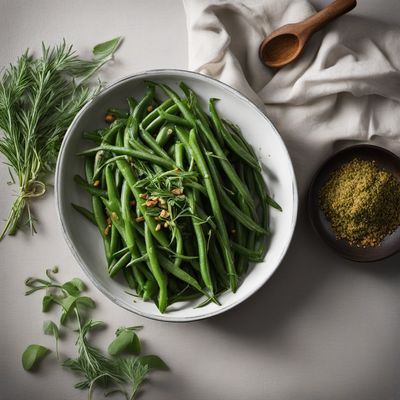
Recipe
Mitsumame with a Twist: A Sweet Delight from Eswatini
Eswatini's Sweet Fusion: Mitsumame with Local Flavors
4.7 out of 5
Indulge in the delightful fusion of Japanese and Eswatini cuisines with this unique recipe for Mitsumame. This traditional Japanese dessert gets a twist with the addition of Eswatini's local ingredients, resulting in a sweet treat that will transport your taste buds to the heart of Eswatini.
Metadata
Preparation time
15 minutes
Cooking time
5 minutes
Total time
2 hours 20 minutes (including chilling time)
Yields
4 servings
Preparation difficulty
Easy
Suitable for
Vegetarian, Vegan (if honey is substituted with agave syrup), Gluten-free, Dairy-free, Nut-free
Allergens
N/A
Not suitable for
Paleo, Keto, Low-carb, High-protein, High-fat
Ingredients
In this adaptation, we incorporate Eswatini's local fruits such as mangoes and bananas, which add a tropical twist to the traditional Mitsumame. Additionally, we replace the traditional sweet beans with honey for a touch of sweetness that complements the Eswatini flavors. We alse have the original recipe for Mitsumame, so you can check it out.
-
2 cups (470ml) water 2 cups (470ml) water
-
1 tablespoon agar agar powder 1 tablespoon agar agar powder
-
1/4 cup (60ml) honey 1/4 cup (60ml) honey
-
1 ripe mango, diced 1 ripe mango, diced
-
2 ripe bananas, sliced 2 ripe bananas, sliced
-
1 cup (150g) mixed berries (strawberries, blueberries, raspberries) 1 cup (150g) mixed berries (strawberries, blueberries, raspberries)
-
1 tablespoon lemon juice 1 tablespoon lemon juice
-
Ice cream or whipped cream for serving (optional) Ice cream or whipped cream for serving (optional)
Nutrition
- Calories (kcal / KJ): 150 kcal / 628 KJ
- Fat (total, saturated): 0g, 0g
- Carbohydrates (total, sugars): 38g, 28g
- Protein: 1g
- Fiber: 3g
- Salt: 0.01g
Preparation
-
1.In a saucepan, bring the water to a boil. Add the agar agar powder and stir until dissolved. Remove from heat.
-
2.Stir in the honey until well combined. Allow the mixture to cool slightly.
-
3.In a separate bowl, combine the diced mango, sliced bananas, mixed berries, and lemon juice. Toss gently to coat the fruits with lemon juice.
-
4.Pour the agar agar mixture into individual serving bowls or glasses, filling them halfway.
-
5.Add a layer of the mixed fruits on top of the agar agar mixture.
-
6.Pour the remaining agar agar mixture over the fruits, covering them completely.
-
7.Refrigerate for at least 2 hours, or until the agar agar sets and becomes firm.
-
8.Serve chilled, optionally topped with a scoop of ice cream or a dollop of whipped cream.
Treat your ingredients with care...
- Mango — Choose ripe mangoes for the best flavor and texture. Peel and dice the mango carefully, discarding the pit.
- Agar agar powder — Follow the instructions on the packaging for the correct ratio of agar agar powder to liquid. It is essential to dissolve the powder completely to ensure proper setting of the dessert.
Tips & Tricks
- For added texture, you can include small pieces of coconut or chopped nuts in the Mitsumame.
- Experiment with different combinations of fruits to suit your taste preferences.
- If you prefer a sweeter dessert, you can drizzle additional honey or syrup over the Mitsumame before serving.
- To speed up the chilling process, place the Mitsumame in the freezer for 30 minutes before transferring to the refrigerator.
- Feel free to adjust the sweetness by adding more or less honey according to your preference.
Serving advice
Serve the Mitsumame chilled in individual bowls or glasses. For an extra touch, top each serving with a scoop of vanilla ice cream or a dollop of whipped cream.
Presentation advice
To enhance the presentation, garnish the Mitsumame with a sprig of fresh mint or a sprinkle of edible flowers. The vibrant colors of the fruits and jelly cubes will make the dessert visually appealing.
More recipes...
For Mitsumame
For Japanese cuisine » Browse all
For Cuisine of Eswatini » Browse all

Eswatini-style Hearty Stew with Local Meats and Vegetables
Savor the Flavors of Eswatini: A Hearty Stew with Local Meats and Vegetables

Eswatini-style Green Beans with Bean Herb
Savory Eswatini Delight: Green Beans Infused with Local Flavors

Eswatini-style Spiced Potato Delight
Sizzling Swazi Potato Fusion
More Japanese cuisine dishes » Browse all

Ikuradon
Ikuradon is a traditional Japanese dish made with rice and salmon. It is a simple and delicious dish that is perfect for lunch or dinner.

Soba (dish)
Soba
Soba is a Japanese dish that consists of thin buckwheat noodles served either hot or cold. The dish is a popular comfort food in Japan and is...

Agebitashi
Deep-fried tofu in broth
Agebitashi is a traditional Japanese dish made with fried tofu and a flavorful broth. It is a popular dish in Japanese cuisine and is often served...





